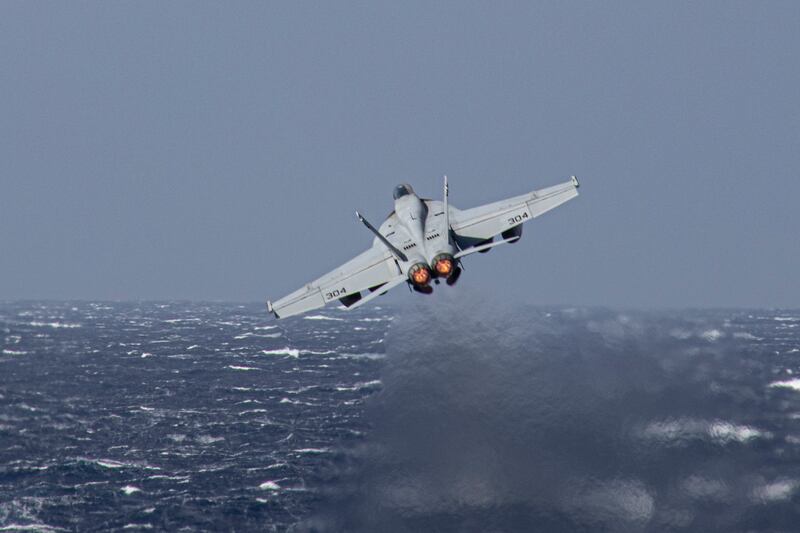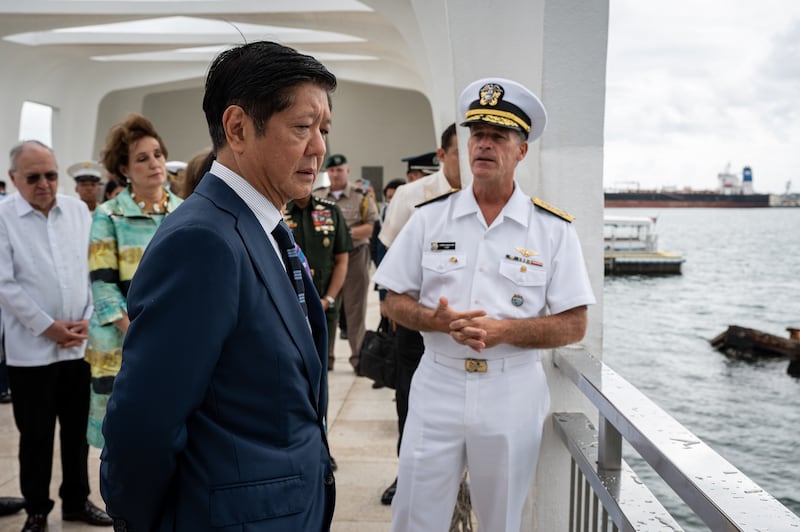The Philippines and United States began long-anticipated joint sea and air patrols off the Southeast Asian archipelago on Tuesday, in a show of bilateral muscle-flexing in the face of perceived Chinese aggression in the South China Sea and Taiwan Strait.
The three-day patrol started off the Philippines’ northernmost islands near Taiwan and were to move toward South China Sea (West Philippine Sea) waters within Manila’s exclusive economic zone, officials said.
Filipino forces have engaged in some tense confrontations at sea lately with the China Coast Guard and Chinese maritime militia ships in disputed waters around Second Thomas ( Ayungin) Shoal, where the Philippines keeps a ship grounded as a military outpost.
“Today marks the beginning of joint maritime and air patrols – a collaborative effort between the Armed Forces of the Philippines and the United States Indo-Pacific Command in the West Philippine Sea,” Philippine President Ferdinand Marcos Jr. said in a statement Tuesday.
He announced the launch of the patrols after returning to Manila on Monday from a U.S. tour where he attended the Asia Pacific Economic Cooperation (APEC) summit in San Francisco and met on Friday with Chinese leader Xi Jinping. He also visited the headquarters of the U.S. military’s Indo-Pacific Command in Hawaii.
“This significant initiative is a testament to our commitment to bolster the interoperability of our military forces in conducting maritime and air patrols,” Marcos said, adding he expected the joint patrols to “enhance regional security and foster a seamless partnership with the United States in safeguarding our shared interests.”
The joint patrols are part of a series of events agreed to by the governments of both nations that have been allies since they signed their Mutual Defense Treaty in 1951.
"The activity will commence in the vicinity of Batanes and will end in the West Philippine Sea," said Col. Xerxes Trinidad, spokesman for the Armed Forces of the Philippines (AFP), referring to the country's northernmost island province, which is a few hundred kilometers from Taiwan.
The patrols involve three navy ships and three fighter-jets from the Philippine military, which were to be joined by one littoral combat ship and one aircraft from the American side. No other details were released.

Marcos, who won the presidency last year, has sought to reverse the foreign policies of his predecessor, ex-President Rodrigo Duterte. Marcos is the son of the late Philippine dictator Ferdinand E. Marcos, who was a staunch ally of the U.S. at the height of the Cold War.
While in office (2016-22), the staunchly anti-American Duterte distanced Manila in its policy toward Washington and sought closer ties with Beijing and Moscow. He ignored a 2016 international arbitration ruling that invalidated China’s sweeping claims to the South China Sea, in exchange for Chinese investment pledges. Duterte subsequently adopted a more nationalistic tone before leaving office last year, but analysts have said that it was a case of too little too late.
Earlier this year, the Marcos administration angered China by agreeing to grant U.S. military forces access to more bases in the Philippines. Beijing responded at the time by accusing the U.S. of provoking China by encircling it with military bases. China views Taiwan as a renegade province.
Stop in Honolulu
Over the weekend in Hawaii, Marcos and Philippine military chief Gen. Romeo Brawner met with Adm. John Aquilino, the top American commander for the Indo-Pacific region. Marcos also mingled with the large Filipino expat community.
On Sunday (local time), the president gave a speech in Honolulu during which he announced that the Philippines would now seek bilateral agreements with two other Southeast Asian claimants to the sea region – Vietnam and Malaysia – because, he said, negotiations between the ASEAN bloc and China for a code of conduct in the South China Sea were moving too slow.
The situation in the South China Sea “has become more dire” with China’s increasing encroachment on the Philippines’ maritime boundaries, forcing his government to seek new partnerships with allies so peace can hold, Marcos said.
China claims nearly the entire South China Sea, including waters within the exclusive economic zone of Association of Southeast Asian Nations member-states Brunei, Malaysia, the Philippines and Vietnam.

On Friday in San Francisco, Marcos met with Chinese President Xi in a bid to ease bilateral tensions after a series of standoffs in the strategic waterway during which Chinese coast guard and militia ships have stepped up efforts to block Philippine vessels from delivering supplies to Manila's military in Second Thomas Shoal.
Marcos said he requested the meeting “to voice to the Chinese leader his concern on some of the incidents that were happening between Chinese and Philippine vessels, culminating in an actual collision,” the Philippine Presidential Communications Office said in a statement Saturday.
In his speech from Honolulu, Marcos noted that Philippine resupply missions to its outpost in the contested reef had been “subjected to coercive tactics and dangerous maneuvers” by the Chinese coast guard backed by its maritime militia.
“So, I have said it before and I will say it again, the Philippines will not give a single square inch of our territory to any foreign power,” he said, while emphasizing that the arbitration award in 2016 supported the Philippine position and rejected Chinese claims to nearly the whole of the sea region.
“We will insist on the preservation of the sovereignty and integrity of the country, while working closely with international partners in the bilateral, regional, and multilateral settings in developing rules and processes to address these challenges,” Marcos said.
Ron Lopez in Manila contributed to this report.
